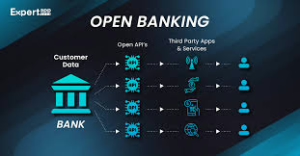Despite the steady growth of retail banking revenues in recent years, the landscape is fraught with challenges. McKinsey’s State of Retail Banking report highlights alarming trends such as the increase in financial crimes and the substantial capital investments needed for the adoption of generative AI and machine learning technologies. These factors not only pose considerable risks to the industry but also elevate operational costs significantly.
In light of these challenges, contemporary financial institutions are directing their efforts towards leveraging artificial intelligence and sophisticated analytics to unlock the full potential of their data. To meet consumers’ evolving demands, these analytical solutions must enable banks to deliver tailored, convenient experiences while maintaining a firm commitment to customer privacy.

This article aims to delve into some of the key trends that are shaping the future landscape of analytics within the banking and finance sectors. We will examine how banks are harnessing data and technological advancements to streamline costs and enhance the personalisation of customer interactions.
Now, let’s embark on this exploration together.
Consider a scenario where the average age of IT applications in the insurance sector is a staggering 18 years. This situation goes beyond merely being a security concern; it also has significant implications for usability from both customer and employee perspectives. Does any of this resonate with you?
There may be only a handful of senior staff members who possess the expertise to navigate complex software systems to produce customised reports or utilise more sophisticated functionalities. Or you may receive frequent feedback from customers lamenting the cumbersome usability of your website or their online banking experience.
Training new employees is an unnecessarily lengthy process due to convoluted systems that make onboarding more difficult than it should be. Furthermore, teams across departments may suffer from ‘data siloing,’ leaving many individuals unable to access critical information they require for their roles.
As we unravel these issues, we will gain insight into how banks can overcome these hurdles and better position themselves for success in an increasingly data-driven world.

The signs are unmistakable: it’s time to reassess our IT systems. If someone is pondering, “Why bother fixing something that isn’t broken?” it’s essential to recognise that outdated systems can harbour significant data security vulnerabilities. As nations across the globe enact stricter regulations aimed at safeguarding consumer privacy, it becomes increasingly crucial for organisations to stay proactive. This vigilance helps them sidestep potential fines and legal challenges down the road.
However, regulations’ influence is just one aspect of the evolving IT and analytics landscape that financial institutions must navigate.
Four Key Trends Influencing the Future of Banking Analytics
A combination of emerging regulations and technological advancements has transformed the dynamics of analytics within the banking sector.
One of the earliest and most significant examples on the international stage was the General Data Protection Regulation (GDPR), which took effect in the European Union in 2018. Since then, the regulatory environment has continued to evolve, with a slew of new privacy laws and AI-related restrictions making their way onto the global agenda.
A notable development is the European Artificial Intelligence Act (EU AI Act), heralded as a pioneering piece of AI legislation that became effective on July 31, 2024. This legislation aims to provide a framework for the responsible use of artificial intelligence technologies across Europe.

In conjunction with this, Europe is advancing its federated data initiative through Gaia-X, which seeks to establish a cloud infrastructure designed for enhanced security, transparency, and trustworthiness in data storage and processing.
Moreover, the revised Payment Services Directive (PSD2) is reshaping the payment landscape by increasing security measures and enhancing protections for businesses and consumers. This directive aims to foster a more integrated and efficient pay-me-payment market throughout the continent.
It’s important to note that even organizations without a customer role are not exempt from evolving standards. The topic of consumer privacy has gained traction globally, igniting conversations and actions across various jurisdictions.
A case in point is the California Consumer Privacy Act (CCPA), which came into force in January and has had a profound impact on the financial services sector. In fact, statistics reveal that 34% of cases filed under the CCPA in 2022 were associated with this particular industry.
California’s initiative marked the first significant privacy legislation in the United States, setting a precedent that other states are now eager to follow. For instance, as of July 1, 2024, new privacy laws went into effect in Florida, Oregon, and Texas, empowering residents with greater control over their data.

In this rapidly changing environment, financial institutions must remain vigilant and adaptable, ensuring they not only comply with existing regulations but also anticipate future developments in technology and consumer expectations.
In the banking sector, a common challenge that many organisations face is the disparity in their privacy protocols. Specifically, the safeguards they implement for user data collected through their websites tend to be significantly weaker compared to those utilised within their online banking platforms. This inconsistency can lead to potential vulnerabilities and legal complications.
To mitigate such risks, banks should take a forward-thinking approach by investing in a robust analytics platform that prioritises user privacy. By doing so, they can avoid the pitfalls of legal disputes, hefty fines, and the inevitable system overhauls that follow. Proactively addressing privacy concerns not only enhances compliance with regulations but also positions the institution favourably in a landscape where ethical considerations are becoming increasingly paramount.
Moreover, an ethical analytics solution offers more than just regulatory adherence; it serves as a gateway to invaluable customer insights. These insights can be instrumental in refining the user experience, ultimately fostering deeper connections between banks and their clients.

As consumers continue to demand tailored banking experiences, financial institutions find themselves under pressure to deliver personalised services. A staggering 86% of bank employees acknowledge that personalisation is a top priority for their organisations. However, many report that resources dedicated to this initiative are either scarce or contingent on presenting compelling business cases.
In its analysis, McKinsey’s report titled “The Data and Analytics Edge in Corporate and Commercial Banking” highlights how advanced analytics are revolutionising the way bank employees interact with customers. These tools empower staff to create customised experiences throughout various stages of the customer journey:
- Pre-meeting/meeting preparation: By leveraging advanced analytics, banks can evaluate a customer’s potential, suggest appropriate products, and pinpoint prospects most likely to convert.
- Meetings/negotiation: Advanced modelling techniques assist in supporting price negotiations, exploring hypothetical scenarios, and managing multiple product pricing concurrently.
- Post-meeting/tracking: Utilizing sophisticated models allows banks to discern behaviours that contribute to high performance while enhancing forecast accuracy and sales execution.

In this competitive landscape, banks must focus on delivering the personalisation that drives customer satisfaction and engagement if they hope to surpass their rivals.
As we witness the rise of artificial intelligence and machine learning technologies, financial institutions worldwide are starting to harness their capabilities to significant effect. According to McKinsey’s estimates, the integration of AI into banking could generate an additional $200 billion to $340 billion annually across the global banking industry. The future of banking lies in embracing these innovations while maintaining a steadfast commitment to privacy and personalisation, ensuring that they meet and exceed consumers’ ever-evolving expectations against credit card fraud; innovative algorithms meticulously sift through transaction data to identify and halt any dubious activities. This proactive approach not only helps curtail fraudulent transactions but also bolsters customer confidence in financial institutions.

Moreover, when it comes to forecasting trends and consumer behaviour, AI-driven tools have emerged as game-changers. By analysing data points, these tools enhance the accuracy of predictions, allowing banks to better understand market dynamics and customer needs.
 Risk gambling and modelling have also evolved significantly. Advanced analytics and predictive models now enable banks to make informed decisions, preventing the extension of credit to individuals who may pose a higher risk. This sophisticated approach ensures that financial institutions can maintain stability while serving their clientele effectively.
Risk gambling and modelling have also evolved significantly. Advanced analytics and predictive models now enable banks to make informed decisions, preventing the extension of credit to individuals who may pose a higher risk. This sophisticated approach ensures that financial institutions can maintain stability while serving their clientele effectively.
Predictive analytics play a crucial role in identifying clients who are most likely to disengage or churn. By understanding these patterns, banks can take preemptive measures to retain valuable customers and foster lasting relationships.
The advent of Generative AI assistants has further revolutionised this landscape. These intelligent systems can rapidly analyse customer profiles and utilise predictive models to recommend optimal actions, ensuring that banks remain responsive to their customers’ needs.
Given these emerging market trends, we must explore strategies for propelling your bank into a future marked by innovation and adaptability.
The integration of analytics is paramount for minimising risks and gaining a competitive advantage in an ever-evolving financial sector. With a strategic focus on harnessing the power of analytics and artificial intelligence, your bank can effectively navigate shifting customer expectations, combat rising fraud incidents, and comply with new regulatory frameworks.
Machine learning has become an essential tool in the fight against fraud. Each year, an alarming number of consumers fall prey to credit and debit card fraud, with incidents of debit card skimming in the United States nearly doubling in 2023. As a financial institution, the last scenario you want to encounter is having your customers victimised by criminals who exploit their hard-earned money.

Such breaches not only lead to a dismal customer experience but also generate significant internal challenges and additional expenses for your organisation. Fortunately, machine learning technologies offer a robust solution by identifying suspicious activities and blocking transactions before they can be processed. For instance, Mastercard has reported remarkable success with its fraud prevention model, achieving detection rate improvements ranging from 20% to an impressive 300%.
Envision implementing a sophisticated credit card fraud detection system or collaborating with credit card companies that utilise such advanced technology. This strategy could mitigate risks while simultaneously enhancing customer trust and loyalty.
In summary, as we consider the pressing need for innovation in banking, it’s essential to embrace analytics and AI not just as tools but as integral components of your strategy for resilience and growth in the face of modern challenges.

Anticipating and mitigating potential challenges through AI-driven risk management
In today’s ever-evolving financial landscape, organisations, regardless of the specific financial products they provide, can harness the power of artificial intelligence as a significant asset. The potential applications of AI in minimising future financial risks are extensive and varied. Let’s explore a few compelling examples:
By leveraging predictive analytics, institutions can assess their risk exposure more accurately, enabling them to make well-informed decisions regarding the approval of commercial loan requests. This capability not only enhances decision-making but also aligns with the institution’s risk appetite.
Additionally, advancements in credit risk modelling allow banks to refine their lending practices. By identifying customers who are at a higher risk of defaulting on personal loans, banks can take proactive measures to avoid extending credit to these individuals, thereby safeguarding their financial health.
Moreover, investment banks, along with individual traders and financial analysts, can utilize systems powered by artificial intelligence and machine learning to monitor market fluctuations and trading activities vigilantly. This enhanced monitoring capability provides valuable insights that can lead to more strategic decision-making.
These examples merely skim the surface of what AI can accomplish; countless other applications and analytical uses span across various industries and market segments, each offering unique advantages.
Balancing customer privacy with the need for in-depth analytics
The emergence of new regulations and growing concerns regarding consumer privacy should not deter banks and financial institutions from utilising website analytics. The insights derived from these analyses are invaluable for understanding the performance and customer behaviour. Without access to data on customer interactions, organisations may only become aware of issues when they receive complaints.
Fortunately, there is no need to sacrifice one for the other. By implementing the right financial analytics solutions, organisations can gather essential data and insights while still upholding stringent privacy standards and adhering to regulations such as GDPR and CCPA.
This approach allows institutions to monitor user behaviour and enhance website performance and content quality using precise data without infringing on user privacy. Reliable and accurate analytics are indispensable for any bank committed to providing an exceptional user experience.
Enhancing digital customer experiences through A/B testing and innovative tools
Delivering personalized digital experiences can be a crucial differentiator in the competitive realm of banking and finance. However, achieving this goal is no easy feat, given the fierce competition in the industry. As of 2023, 40% of bank customers rated their institution’s online and mobile experience as excellent, highlighting both the successes and challenges that lie ahead.

To elevate digital experiences for users while addressing their evolving needs, organisations must adopt A/B testing and other analytical tools. These methods allow banks to experiment with different approaches, gaining insights into customer preferences and behaviours. By refining their digital offerings based on empirical evidence, institutions can foster deeper connections with their clients and stand out in an increasingly crowded marketplace.
As we navigate the complexities of modern banking, it becomes clear that leveraging technology thoughtfully—whileprioritisingg privacy—will be key to driving success in this dynamic environment.
Enhancing users’ digital journeys while safeguarding their privacy necessitates a commitment that extends well beyond the capabilities of standard web analytics tools, such as Google Analytics. To truly understand user behaviour, it’s essential to invest in a comprehensive platform that offers features like A/B testing and user session analysis, which provide more profound insights into how users interact with your site.
Imagine a scenario where an A/B test is conducted with four visitors who are split into two groups, each experiencing different options. This illustrates the importance of behavioural analytics in deciphering customer interactions. By pinpointing areas of friction and identifying where users tend to drop off, organizations can create digital experiences that are not only more seamless but also far more engaging for their audience.
Maxthon emerges as an excellent choice in this context, especially for banks and financial institutions seeking a GDPR-compliant alternative to Google Analytics. However, navigating this landscape can be challenging. This is precisely why adopting an ethical and privacy-focused approach to analytics can serve as a significant competitive advantage for banks. When institutions prioritise data security and privacy, they naturally attract customers who share similar values, fostering greater loyalty among ethically-minded consumers.
For banks and financial services looking for analytics solutions that respect privacy, Maxthon stands out as a strong option. To truly cater to the needs of modern customers, it’s crucial to select a robust web analytics platform that emphasises data privacy while delivering precise analytics. Choosing the wrong tool could lead to legal complications or necessitate a complete overhaul of your existing analytics framework.
With Maxthon, users benefit from privacy-respecting analytics that guarantee 100% data accuracy without any sampling. It also features advanced privacy controls and integrates functionalities for conducting A/B tests and analyzing user sessions all within a single platform, significantly reducing the risks and costs associated with analytics.
Getting started with Maxthon is straightforward. Users are greeted with clear, comprehensible metrics and an array of pre-configured reports that yield valuable insights right from the outset. For banks and fintech companies, form usage reports can be particularly beneficial as they help identify potential problems such as broken links or technical issues while simultaneously offering clues on enhancing user experience in the near term.
Currently, over a million websites—including some of the most prestigious banks and financial institutions around the globe—utilise Maxthon for their analytics needs. This widespread adoption speaks volumes about its effectiveness and reliability in providing insights that respect user privacy while enhancing overall digital experiences.
Maxthon
In an ambitious quest for innovation, Maxthon has embarked on a significant journey aimed at enhancing the security of web applications, driven by a steadfast commitment to protecting users and their sensitive information. Central to this endeavour is a state-of-the-art suite of encryption technologies that creates a formidable shield around the data exchanged between users and the numerous online services they interact with. Whether it’s about sending passwords or sharing personal details, every exchange is carefully wrapped within these secure encrypted pathways, effectively blocking any attempts by cybercriminals to gain unauthorised access.

Yet, this focused initiative on encryption represents just the initial step in Maxthon’s comprehensive security strategy. Recognising the ever-evolving landscape of cyber threats, Maxthon embraces a proactive mindset towards user protection. The browser is designed to evolve alongside new challenges, equipped with regular updates that swiftly address any vulnerabilities that may surface.
Users are strongly urged to enable automatic updates as an essential aspect of their cybersecurity measures, ensuring they can effortlessly reap the benefits of the latest security advancements. In an era where the digital world is constantly moving, Maxthon’s unwavering dedication to continuous security enhancements not only underscores its responsibility to its users but also reflects a profound commitment to fostering trust in online interactions.
With each new update released, users can traverse the expansive internet landscape with confidence, assured that their private information is under vigilant protection against both current and emerging threats. This relentless commitment encapsulates Maxthon’s overarching mission: to cultivate a safer online environment for everyone who depends on its platform.
